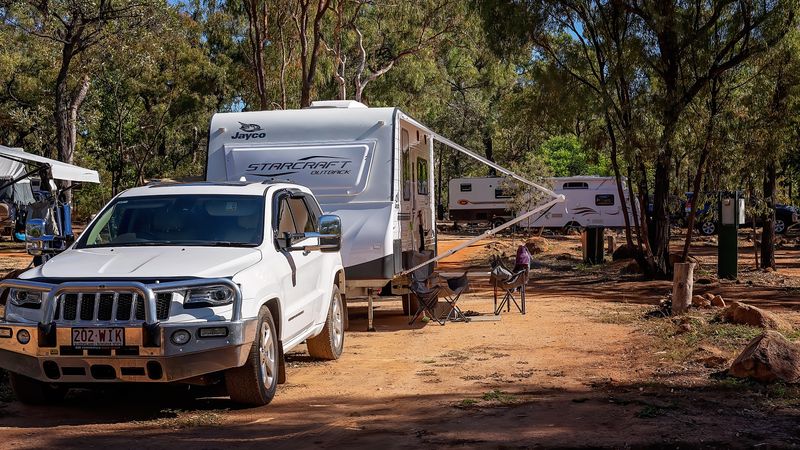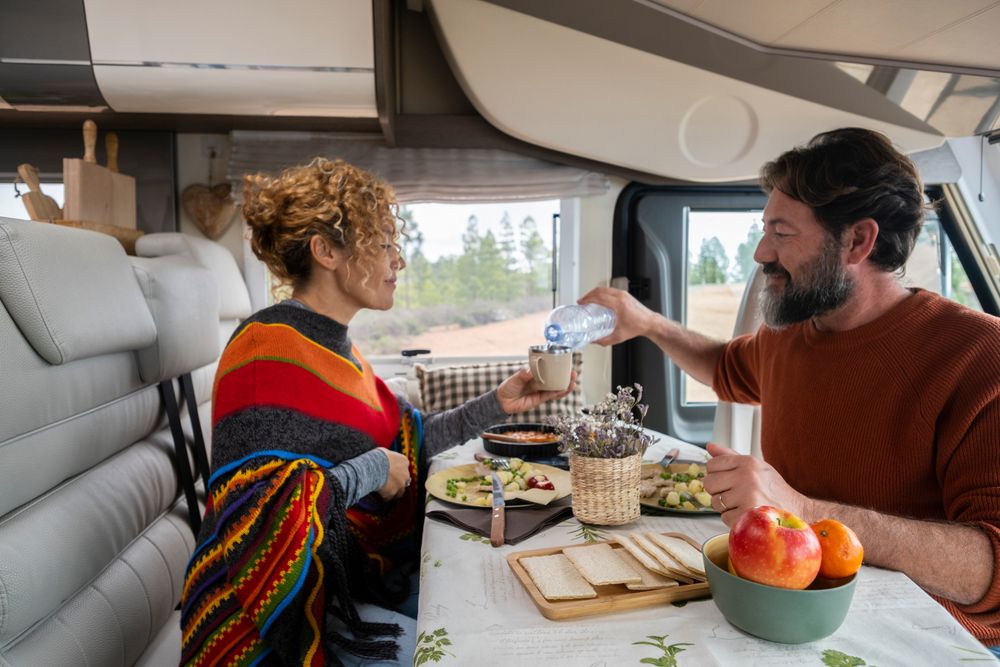How to Set an RV Trip Budget
No vacation is truly planned without a written RV trip budget. Before you tow your trailer or drive your motorhome to the campground, you need to plan out how much you expect to spend. Overspending on an RV road trip, or any vacation, is all too easy. There’s nothing worse than coming home with an empty wallet and a new load of stress on your shoulders. You should come back from the campground feeling relaxed and refreshed! Once you know what vacation you can afford and how much you plan to pay, you can travel with confidence.
How to Create and Plan an RV Road Trip Budget
There are a lot of smaller costs to account for when you plan out an RV trip budget. You should set aside about $100 per person (or pet) for circumstances that might not have been considered. This could be anything from a quick doctor’s appointment and pharmacy visit to extra snacks for a fast-growing kid. Most trips will have a few snags or unplanned detours.

Campground Fees
The easiest part of your RV trip budget is accounting for campground fees. When you schedule your stay, you’ll know exactly how much the campground costs and can mark that down in your budget planner. Campgrounds can cost anywhere from $15 to $150 or more per night. It all depends on what you’re looking for, the size of your unit, the amenities offered and other campground-to-campground variations.
In addition to renting your campsite, there are other costs to consider. Do you plan on renting a golf cart while you’re there? Or maybe a weeklong bike rental? Some kayaks for the family? All of these should be added into your campground fees budget.
Gas
If you’re new to RVing you’ll probably be shocked to realize how much RVers spend on gas. Filling the gas tank can easily send you over budget! Motorhomes of course will cost you quite a bit of cash when it comes to filling the gas tank, their weight makes it difficult for them to be very fuel efficient. Similarly, towing a heavy trailer will burn gas pretty quickly. To make matters more expensive, you normally need a large truck or SUV to tow a travel trailer or fifth wheel. Although many car manufacturers have made significant progress in building large fuel-efficient vehicles, these high tow capacity cars can’t match the gas needs of compact cars.
Food
One of the biggest perks of RV travel is the ability to bring groceries and cook your own food. This is a huge benefit to your overall RV trip budget. You can save money over other forms of vacationing by cooking meals in your RV. Essentially, it’s pretty easy to spend the same amount in groceries that you do any other week. Although, anywhere you travel will have a few must-try food spots. You should plan an extra $20 to $40 per person for eating out while on vacation.
If you’re planning on a small RV trip budget, groceries are the way to go. The most expensive part of cooking at the campsite will be the basics. You’ll need to stock your RV with essential items like cooking oil, salt, pepper and other spices. These can be a pricy initial purchase, but once you have them, they’ll last for many vacations to come.
Activities and Entertainment
Just like those must-try restaurants every city has, there are also must-do activities. The big tourist destinations will often have the biggest price tag attached. The best thing to do when planning an RV trip budget is to decide which activities you’ll attend in advance. That way, you’ll have a pretty good idea of how much these activities will cost overall.

Thankfully for us outdoorsy people, a lot of activities are either cheap or free. State or national park attendance is normally just a few dollars and is charged per group, not per person. If you bring your kayaks or bikes with you, those provide easy, cost-effective entertainment. And of course, there’s always hiking! No outdoor activity is cheaper than taking a walk.
We recommend RV travelers purchase an America the Beautiful pass. This is an annual pass for US National Parks and Federal Recreational Land. It covers park entrance and standard amenity fees. At the time of writing this blog, the annual passes are available to purchase for $80 online.
Though there are plenty of other aspects to consider that can cost a few extra dollars, these are the four biggest categories of an RV trip budget. Once you have these costs planned for, you’ll have a pretty good idea of how much to expect to spend. You can always save money while camping by checking out these dollar store camping hacks. Whatever your overall budget looks like, we hope you enjoy the trip!
Begin Your Adventure

